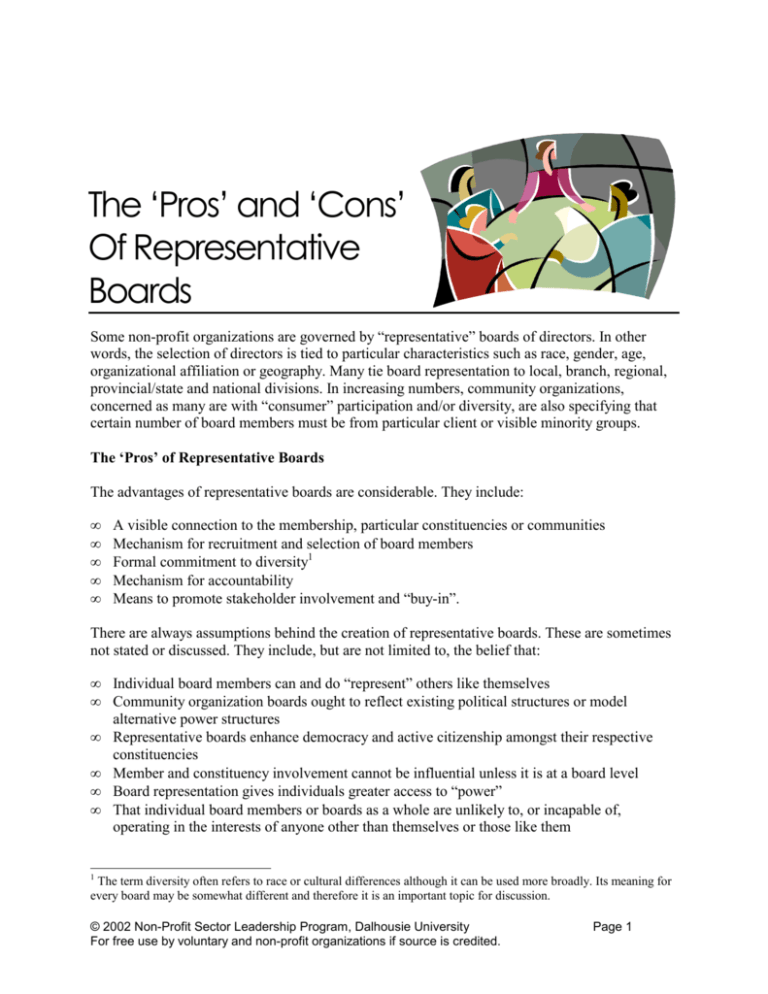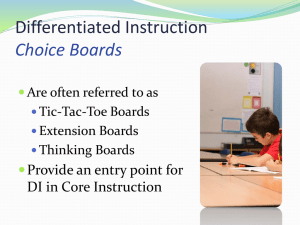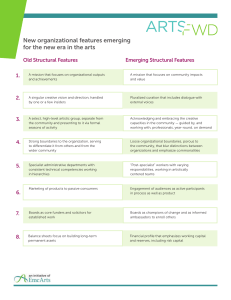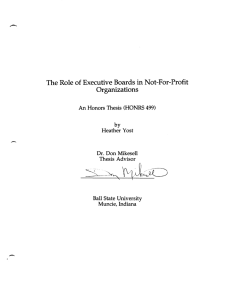The 'Pros' and 'Cons' Of Representative Boards
advertisement

The ‘Pros’ and ‘Cons’ Of Representative Boards Some non-profit organizations are governed by “representative” boards of directors. In other words, the selection of directors is tied to particular characteristics such as race, gender, age, organizational affiliation or geography. Many tie board representation to local, branch, regional, provincial/state and national divisions. In increasing numbers, community organizations, concerned as many are with “consumer” participation and/or diversity, are also specifying that certain number of board members must be from particular client or visible minority groups. The ‘Pros’ of Representative Boards The advantages of representative boards are considerable. They include: • • • • • A visible connection to the membership, particular constituencies or communities Mechanism for recruitment and selection of board members Formal commitment to diversity1 Mechanism for accountability Means to promote stakeholder involvement and “buy-in”. There are always assumptions behind the creation of representative boards. These are sometimes not stated or discussed. They include, but are not limited to, the belief that: • • • • • • Individual board members can and do “represent” others like themselves Community organization boards ought to reflect existing political structures or model alternative power structures Representative boards enhance democracy and active citizenship amongst their respective constituencies Member and constituency involvement cannot be influential unless it is at a board level Board representation gives individuals greater access to “power” That individual board members or boards as a whole are unlikely to, or incapable of, operating in the interests of anyone other than themselves or those like them 1 The term diversity often refers to race or cultural differences although it can be used more broadly. Its meaning for every board may be somewhat different and therefore it is an important topic for discussion. © 2002 Non-Profit Sector Leadership Program, Dalhousie University For free use by voluntary and non-profit organizations if source is credited. Page 1 The “Pros’ and ‘Cons’ of Representative Boards The ‘Cons’ of Representative Boards Some organizations experience problems in operating with formal representative structures. Some typical pitfalls include: • • • • The representative structure of the board becomes a paramount but token feature of organizational diversity and accountability. Responsibility for representation practices passes from the board as a whole to individual board members Representation creates competition for resources among groups or constituencies Representation places an emphasis on constituent rather than organizational interests which may lead to conflict and internal politics Representation can lead to cumbersome decision-making especially where directors must consult with their constituencies on many issues Some Suggestions for Improving Board Representation The following are a few suggestions for enhancing board leadership and accountability for any board that values its ability to “represent” its community whether or not it does so (in part) through formal representative structures: • • • • • • • • • • • Recognize effective representation as a board “destination” or “a work in progress” not a fact based on board composition. Spend board time and resources consulting with the membership through special consultation sessions, surveys, questionnaires, and formal needs assessments. Use newsletters and web site to invite feedback. Make the “representation” expectations of board members explicit in board job member descriptions and other board policies Provide support to board members in connecting to their particular constituency and help them evaluate these efforts Separate appointment (how people are chosen for the board) from representation (how people are expected to act once they get there) Develop a board recruitment plan that includes representation as only one qualification for board membership Distinguish between regular and ex-officio board members. Create a distinct category for routine appointments by other organizations and determine if these should be voting or nonvoting positions Develop and enforce a “speak with one voice” policy for communication outside of board meetings. Distinguish “ownership” or member interests from client, staff, and volunteer interests; the former should be the main concern of the board Distinguish between governance decisions and operational decisions Ensure that the organization’s mission, objectives and core values are front and centre - keep all “eyes on the prize”. A vague mission statement or absence of clear objectives can lead to board division rather than board cohesion © 2001 Non-Profit Sector Leadership Program, Dalhousie University Page 2








